When it comes to installing a composite deck, breaker boards are a smart choice. Breaker boards play a critical role in composite decking to ensure your decks remain safe, healthy and sustainable in the long term. They are a much more practical and visually appealing alternative to butt joints, and they are easy to install.
In this article, we’ll explain exactly what a breaker board is, why is a smart choice to install your deck –especially if you are using high quality and long length composite decking. We will also briefly outline the step-by-step guide you can use to install a breaker board on your deck.
What is a breaker board?
A breaker board is a perpendicular board that is used to break up long runs of decking during the installation of a composite deck. It is placed at regular intervals between the decking boards, which helps to reduce the amount of expansion and contraction that occurs due to temperature changes. By doing so, it can help prevent warping and other damage. Additionally, breaker boards can be used to create interesting and unique patterns in your deck design.
Why breaker board is necessary?
Composite decking is made of recycled wood flour + recycled plastics, which means they have a greater tendency to expand and contract when weather fluctuates (a process called linear expansion). Expansion especially accelerates when decks are exposed to wet and humid weather.
The most value of using breaker boards in deck construction is that they can slow down the process of expansion and contraction. By breaking up long runs of decking boards with a breaker board in between, you create smaller sections that are less likely to experience significant movement due to these changes. This leaves your deck in a healthy condition for longer and reduces the level of maintenance required.
What is the difference between butt joints and breaker board installation?
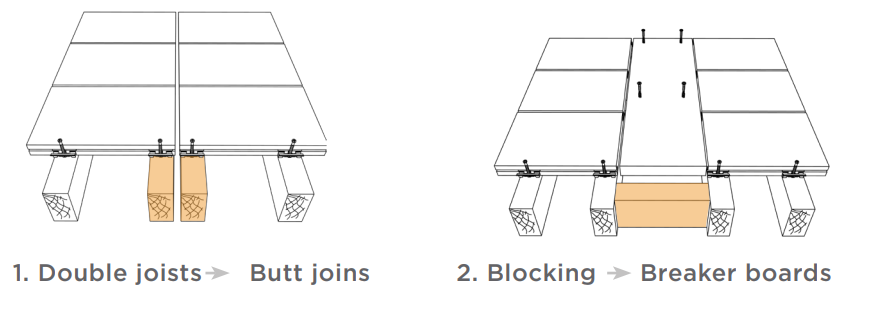
Decking boards tend to expand and contract with changes in temperature and humidity, which can cause problems such as warping, buckling or cracking over time. The problem with using the butt joist stagger method is that it can be challenging to ensure consistent gaps between the deck boards across the entire surface. This may result in uneven spacing between boards in different areas, which could affect both the appearance and functionality of the deck.
For example, if you’re installing a 5.4-meter board, you’ll likely experience a contraction and expansion double the amount that a regular 2.7-meter board will. The boards will contract away and expand into one another, creating overly huge expansion gaps. This can lead to warping and other types of damage to the deck. Attempting to used locking clips to hold the boards in place won’t always work.
Many of the problems you’ll experience with butt joints are alleviated when using a breaker board as an alternate spacing and configuration solution. Breaker or Border boards (boards laid at 90° to the rest of the deck) can be used to create a border around the deck and this will aid in controlling expansion resulting in better.
Instead, it is recommended to use a breaker board to break up long runs of decking, you can ensure consistent spacing between your boards and avoid the creation of huge expansion spacing. A breaker board will allow the other boards on your deck to expand and contract equally, as opposed to having them all contracting and expanding at different lengths.
What the benefits of using breaker board when installing a deck?
- Boards expand and contract equally: The problem with using the butt joint stagger method is that you’ll never be able to ensure consistent gaps across the deck. A breaker board will allow the other boards on your deck to expand and contract equally, as opposed to having them all contracting and expanding at different lengths. With one perpendicular board dividing your boards on the deck, you can ensure consistent spacing between your boards and avoid the creation of huge expansion spacing.
- Enhanced Stability: breaker boards provide enhanced stability to your deck by acting as s transition between different sections of the deck. They help distribute weight evenly and prevent any potential sagging or warping that can occur over time.
- Aesthetics Pleasing: butt joints are commonly used in woodworking to join two pieces of decking together end-to-end. They can be simple to create but may not aesthetically pleasing due to the visible seam between the two pieces of decking. Breaker boards come with less lines and points of contact, creating a much more symmetrical illusion that’s pleasing to the eye.
- Flexibility in Design: breaker boards offer flexibility in design, allowing you to incorporate different colors or patterns into your decking layout.
- Increased Durability: they can increase the overall durability of your deck. They help to prevent moisture penetration and minimize the risk of rot or delay, ensuing that your deck lasts longer and requires less maintenance.
- Uniformity: breaker boards help maintain uniformity in the decking layout by breaking up long runs of decking boards and creating smaller sections that are easier to manager. All sections of your boards will be of the same length, so everything will just look neater.
- Easy Installation: installing breaker boards is relatively simple and straightforward since they require no special tools or techniques beyond typical deck building methods.
- Cost Effective: the breaker boards provide added value to your deck without significantly increasing the overall cost of the project.
How to install a deck breaker board?
1.Work out where breaker boards will be positioned on your deck. The substructure of your deck will need to built to support your breaker boards.
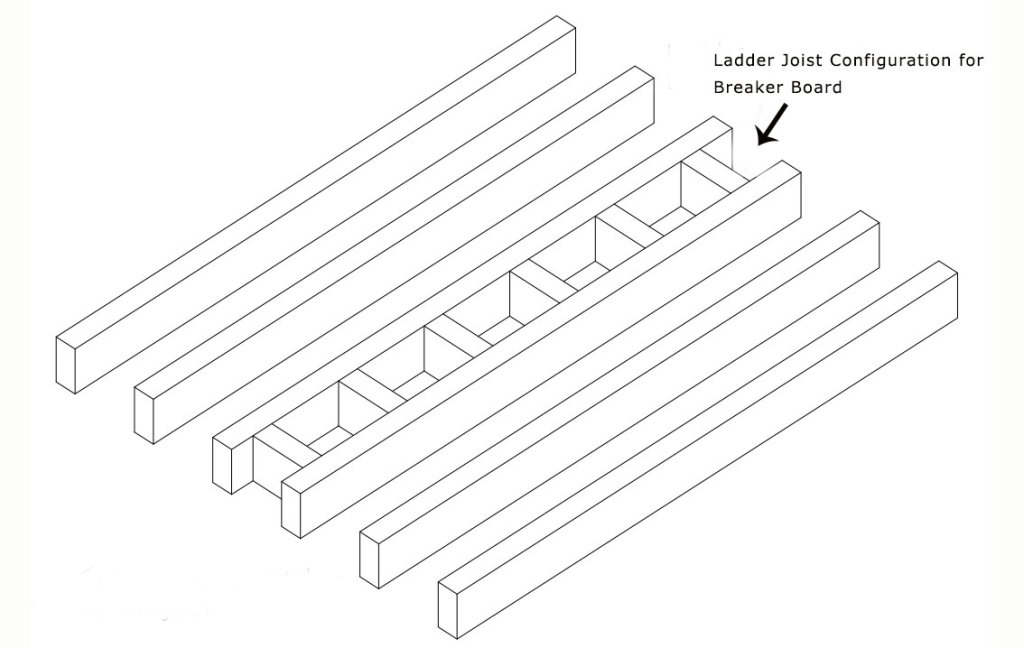
2. The breaker board will need to be top fixed or surface mounted to the ladder joist. Be sure to secure it firmly to the deck frame. This will help prevent warping and other types of damage to the deck over time.

3.Keep expansion gaps between each board to allow for proper expansion and contraction due to temperature changes.

4.place the breaker board perpendicular to the other boards at regular intervals.
Bongywood Composite Decking Projects
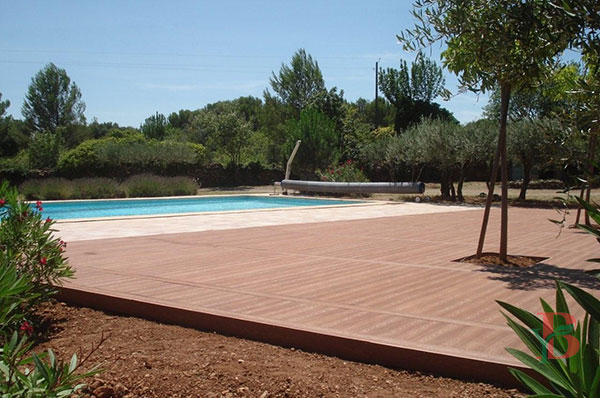
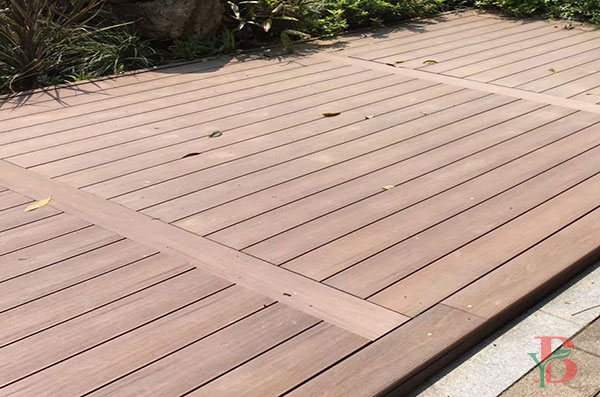
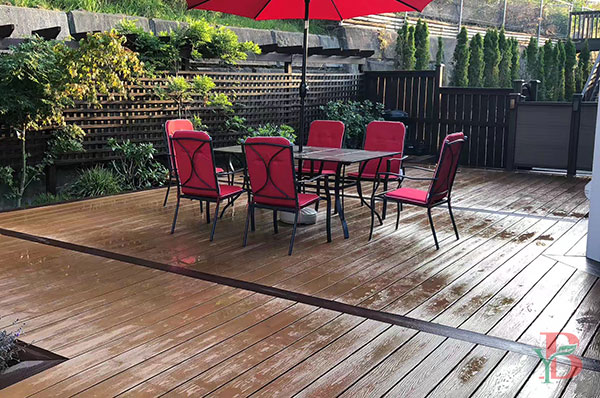
Mastering proper installation is key to maximizing the durability and beauty of your outdoor WPC decking. Discover how to significantly extend its lifespan with our essential guide: 8 Installation Secrets to Triple the Lifespan of WPC Decking.
Bongywood Wood Plastic Composite
Explore our range of Bongywood WPC materials for your decking project, and feel free to contact us for more information, expert guidance, or any inquiries. Let us assist you in creating your ideal outdoor living space.
Guangdong Bangying New Building Materials Co., Ltd. is a professional manufacturer specializing in the R&D, production, and sales of WPC (Wood Plastic Composite) materials, our products include classical composite decking, 3D-Embossed composite Decking, Capped composite decking, WPC Wall Panel, WPC Railing & Fencing, WPC Pergola & Gazebo, WPC Chairs & Bench, WPC Flower Planter Pots, etc.
Leave a Reply






